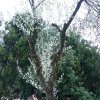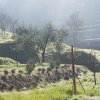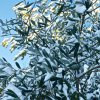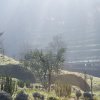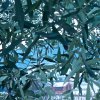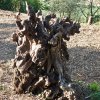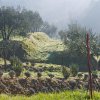Olive Grove and Olive Oil
Historically, one of the main activities on the estate, as in the entire Vorno region, was the cultivation of olive trees, for which specific zones were dedicated on the basis of their microclimate and terrain. It is estimated that there were around 7 thousand productive olive trees in the past, of varieties typical of the territory (Leccino, Frantoio, Razzo, Pendolino). Some of the old olive groves were recovered in 2007, later expanded in 2009, and are now used for the production of extra virgin olive oil.
MANAGEMENT AND CULTIVATION
The olive grove is cultivated according to the regulations for organic agriculture, protecting the natural balance of trees and soil. Using organic fertilisers such as manure and allowing the grass to seed freely in the soil, the fertility and the biodiversity of the plants are protected. At the same time, the organic residues derived from the grass clippings return precious substances to the ground for many organisms useful to the environment. Thanks to targeted pruning, the typical form of farming of the area has been restored, giving the trees the best conditions for growth and returning them to the typical landscape of which they are part.
OLIVE FRUIT FLY
To control the olive fruit fly, an insect very harmful to this crop, kaolin is used, a natural clay that protects the olive from this pathogen by exploiting a particular “optical stratagem”. This kaolin treatment makes the olives pale and invisible to the fly. The surface of the olive also becomes tougher and therefore more difficult to attack. Allowing the grass to grow also promotes an increase in biodiversity, not only vegetal, but also animal, and in particular an increase in species that are antagonistic towards the fly. The olive groves of the estate are home to a lavender planting, chosen for its landscape value.
Oliveto

